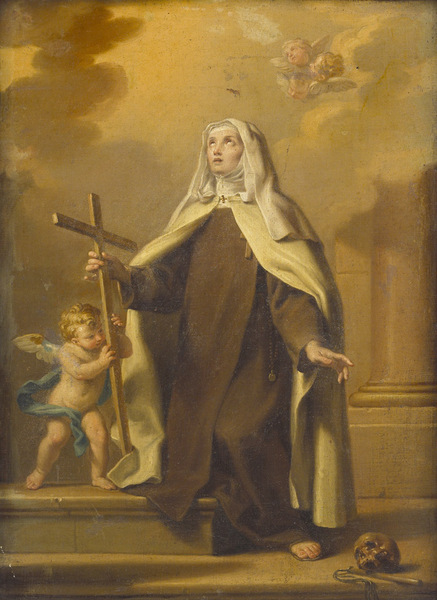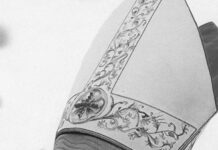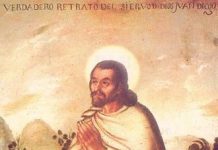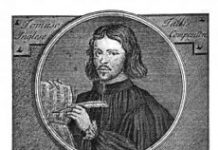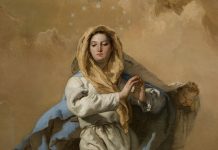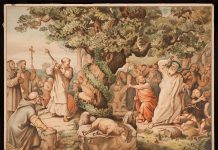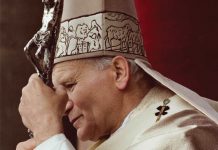On May 16th, the Franciscan family within the Universal Church celebrates the feast of St Margaret of Cortona. Her life was not at all rosy, but she kept her heart open to Christ and the unimaginable happened.
Margaret was born in 1247 in Laviano, Italy, in a small farming village. At the age of seven she experienced her first trauma in her life: the death of her beloved mother. Then, she immediately suffered her second trauma just two years later: the neglect of her step mother. In fact, her father remarried a woman who gave a hard time to the little Margaret. Tormented by stepmother’s ongoing criticism as well as her father’s neglect, Margaret had no other choice than escaping from her dysfunctional family. She was only seventeen years of age. In her new life-dream, Margaret cohabited with a nobleman’s son to Monteculpiano for nine years. Although Margaret instantly asked him to marry her, particularly when she bore him a son, he couldn’t care less. He never committed himself to her.
After this third trauma, a bigger one was on its way. Margaret’s ‘lover’ left home to check his property, and, unfortunately never returned. After some days his favourite dog made his way back to the castle and, pulling at her dress while barking, led her to a pile of sticks and dirt where her paramour’s corpse was found; he had been beaten to death and hurriedly buried in the woods. Upon experiencing this great fourth trauma of seeing her his broken body, Margaret started her spiritual journey of conversion. She blamed herself for his death and swiftly initiated public penance for her past sins.
After this terrible situation, Margaret closed this dark chapter within her life story by giving all gifts to her lover’s family, took responsibility for her little son and went back to her father’s house in Laviano. Although she wept and urged her father took accept her back, his wife’s evil influence made him refuse his daughter and sent her out. Following some time roaming around Laviano, encouraged by a mysterious inner voice, Margaret left for Cortona to seek refuge. On their way to the city Margaret and her son met two sisters who presented them to the Franciscans, who provided her with that much-needed spiritual care.
Margaret started externalizing her deep internal contrition in significant gestures of penance. At Laviano at Mass she wore a rope around her neck. When she was assailed by temptations to return to the sinful ways of her past she wanted to disfigure her face. However, her confessor, Brother Giunta, was wise to help her by saying no to that. Nevertheless, Margaret voluntarily underwent self-mortifications such as abstaining from eating meat and sleeping on the ground.
Upon ending her three years of intense purification, Margaret was finally received within the Franciscan tertiary Order, which inspired a new chapter in her life. She took care of the poor sick, accepted alms and gave away the good food she received to the poor while keeping for herself and her son simply the broken scraps.
Once, in 1277, while she was meditating in the Franciscan Church, Margaret heard these words: What is thy wish Poverella?” and she answered: I neither seek nor wish for aught but Thee, my Lord Jesus.” From that moment on, Margaret became one with Christ Crucified, spending more and more time in silence. She was blessed with visions of Christ and divine messages, some of which belonged to others. Margaret felt guided to rebuke the Bishop of Arezzo due to his warlike manners. He ignored her completely and was finally killed in battle. The interesting thing was that while Margaret had an intense spiritual relationship with Christ, she kept close those who suffered. Thanks to her convincing witness, many were the people who returned to the sacraments. Margaret also founded a hospital for the poor sick as well as a group of Tertiary Sisters called Le Poverelle. False heinous rumors said that she and Brother Giunta were ‘involved’. However, when these stories were proven false her saintly reputation increased steadily and greatly.
Margaret passed away exactly according to the day and hour revealed to her, February 22, 1297. She spent 29 years of her life in penance for the sins she committed in her youth. Her incorrupt body is preserved over the altar of the church named after her name, in Cortona. It took some time for the Church to officially canonize her. This occurred in 1728.
Within the history of spirituality, St Margaret of Cortona is an outstanding inspiration for those who regard themselves as terrible sinners whom God could not possibly forgive. Once, Jesus told her: I have made you a mirror for sinners. From you will the most hardened learn how willingly I am merciful to them, in order to save them. You are a ladder for sinners, that they may come to me through your example. My daughter, I have set you as a light in the darkness, as a new star that I give to the world, to bring light to the blind, to guide back again those who have lost the way, and to raise up those who are broken down under their sins. You are the way of the despairing, the voice of mercy.
St Margaret of Cortona’s fascinating story of repentance reminds me of the rich spiritual reflections handed to us on the subject by Pope Benedict XVI. This great spiritual master used to say: “Holiness does not consist in never having erred or sinned. Holiness increases the capacity for conversion, for repentance, for willingness to start again and, especially, for reconciliation and forgiveness. Moreover, Pope Benedict encourages us that frequent confession of our sins help us to mature spiritually as human beings. He said:
It is very helpful to confess with a certain regularity. It is true: our sins are always the same, but we clean our homes, our rooms, at least once a week, even if the dirt is always the same; in order to live in cleanliness, in order to start again. Otherwise, the dirt might not be seen but it builds up. Something similar can be said about the soul, for me myself: if I never go to confession, my soul is neglected and in the end I am always pleased with myself and no longer understand that I must work hard to improve, that I must make progress. And this cleansing of the soul which Jesus gives us in the sacrament of confession helps us to make our consciences more alert, more open, and hence, it also helps us to mature spiritually and as human person.
Finally, from St Margaret of Cortona’s life, one sees conversion as a passage from a mere system of beliefs to a loving relationship with a loving God whose interest is to mingle with us and have a loving relationship with us. Pope Benedict said: Many people today have a limited idea of the Christian faith, because they identify it with a mere system of beliefs and values rather than with the truth of a God who revealed himself in history, anxious to communicate with human beings in a tete-a-tete, in a relationship of love with them.
St Margaret of Cortona, you repented of a sinful life and chose to serve God wholeheartedly as a Third Order Franciscan. You devoted yourself to serving God for the rest of your life. Please bring my petitions before God, Whom you served with such devotion! As you carried out acts of penance and charity, you also worked to serve the Church. You challenged your worldly bishop and did what you could to bring him to deeper holiness. Pray for me, that I may always be eager to serve God and His Church in my life. Pray that I may never waver in my commitment to God. Thank you for showing us by your life story that conversion is still on for us.
St Margaret of Cortona, pray for us!

